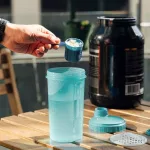Have you ever woken up within the middle of the night, sopping wet in sweat, feeling hot and clammy, and questioned if it’s only a warm room or something more severe? I assume we’ve all been there at some point—groggy, a bit harassed, and perhaps even a piece stressful. That’s when knowing how to spot a fever becomes a game-changer. Fevers aren’t one-size-fits-all; what’s normal for you might be a red flag for your kid or your grandparent. And figuring out if you need medicine for fever—or something more—can feel overwhelming without the right info.
Let me tell you about my friend—I’ll call her Leilani (not her real name, just to keep things private). A while back, she woke up feeling awful, her temperature spiking. She popped some over-the-counter medicine for fever, hoping it’d do the trick. But a couple of days later, she was still miserable and ended up needing a hospital visit. Turns out, it wasn’t just a stubborn bug—her fever was a sign of something bigger that medicine alone couldn’t fix. Her story stuck with me because it’s a reminder: fevers can be tricky, and knowing when to act is key.
In this guide, we’re diving deep into everything you need to know about fevers—how to recognize them across different ages, measure them right, and manage them at home (yes, including when to reach for medicine for fever). We’ll also talk about when it’s time to call a doctor. My goal? To go away you feeling confident and geared up to deal with a fever, whether it’s yours or a loved one’s. Let’s get started!
What Is a Fever, Anyway?

Okay, permit’s start with the basics: what even is a fever? At its center, a fever is your body’s way of saying, “Hey, I’m fighting some thing here!” It’s a temporary bump in your temperature, commonly brought about by way of an contamination—like a chilly, the flu, or something bacterial. Your brain’s thermostat (yep, you’ve got one, called the hypothalamus) cranks up the heat to make it tough for those germs to stick around.
The magic number most folks point to is 100.4°F (38°C). Hit that or higher, and you’ve likely got a fever. But—and that is a large but—it’s now not pretty that easy. Your age, the time of day, or even how you are taking your temperature can shift the numbers a piece. That’s why knowledge what’s “regular” for you or your own family is a amazing place to begin.
Here’s a quick rundown of normal temperature ranges by age, pulled from solid sources like Healthline and WebMD:
- Infants (0-1 year): 95.9°F to 99.5°F (35.5°C to 37.5°C)
- Children (1-18 years): 97°F to 99°F (36.1°C to 37.2°C)
- Adults (19-64 years): 97°F to 99°F (36.1°C to 37.2°C)
- Elderly (65+): 96.4°F to 98.5°F (35.8°C to 36.9°C)
Notice anything? Babies and older folks don’t quite follow the same rules. Infants’ temps can bounce around as their bodies figure things out, while seniors tend to run a little cooler naturally. So, a 99°F reading might be no big deal for you but could hint at trouble for your newborn or your grandma. Keep that in mind as we go—it’s all about context.
How to Measure Temperature Like a Pro

Before you may decide if it’s a fever, you’ve got to get an accurate reading. Sounds simple, right? Well, not quite. The method you use—mouth, armpit, ear, or even rectum—can change the number you see. And picking the wrong one for the wrong age group? That’s a recipe for confusion.
Here’s the lowdown on the main ways to check temperature:
- Oral (mouth): Perfect for older kids and adults. Pop the thermometer under your tongue, close your mouth, and wait for the beep. Easy peasy.
- Rectal: The go-to for babies and little kids under 3. It’s the most accurate, though I get it—not the most fun. Lubricate the tip, slide it in gently about half an inch, and hold steady.
- Axillary (armpit): Quick and painless, but not super precise. Stick it under the arm, press down, and wait. Good for a rough check.
- Tympanic (ear): Fast and kid-friendly, but you’ve got to line it up just right in the ear canal. Miss that sweet spot, and the reading’s off.
So, which one’s best? For newborns (especially under 3 months), doctors swear by rectal—it’s the gold standard for precision. Older kids and adults? Oral works great. Ear and forehead thermometers are handy, but they can be hit-or-miss, so double-check with another method if the number seems funky.
Here’s how to nail each one, step by step (thanks to tips from Mayo Clinic):
- Oral: Clean the thermometer, place it under the tongue, lips closed, and wait it out.
- Rectal: Dab some petroleum jelly on the tip, insert gently, and keep it still till it beeps.
- Axillary: Tuck it in the armpit, lower the arm, and let it sit.
- Tympanic: Pull the ear back slightly, fit the tip in, and hit the button.
Pro tip: always clean that thermometer before and after—nobody wants extra germs in the mix. Get this part right, and you’re set to figure out what’s really going on.
Spotting a Fever: Age Makes a Difference
Alright, you’ve got your thermometer reading—now what? A fever’s not just about hitting 100.4°F; it’s approximately what that range method for who’s got it. Let’s smash it down by means of age institution so you recognize what to look at for.
Infants (0-3 Months)
For the tiniest infants, any fever is a huge deal. If your infant’s temp hits 100.4°F (38°C) or better, don’t wait—name your physician or head to the ER. Their immune systems are still figuring things out, so even a small fever may want to imply a critical infection. No messing around here.
➤ Need more info on newborn fever signs? Check out Fever in Babies: What You Need to Know Right Now.
Infants and Kids (3 Months to 5 Years)
Once they’re past that 3-month mark, the rules shift a bit. A fever’s nonetheless 100.4°F (38°C) or up, however it’s much less about the range by myself and greater approximately how they’re acting. If it climbs to 102°F (38.9°C) or better and sticks round for extra than a day or , it’s well worth a name to the pediatrician. Keep an eye out for extras like:
- Trouble breathing
- A rash popping up
- Acting super sleepy or fussy
Those could mean it’s more than just a cold.
Older Kids and Adults
For the rest of us—older kids and grown-ups—a fever’s still 100.4°F (38°C) or higher. Most of the time, it’s not a panic moment unless it’s really high or drags on. Think 103°F (39.4°C) or more, lasting over 3-4 days, or paired with stuff like chest pain or confusion. That’s when you pick up the phone.
Elderly (65+)
Here’s where it gets sneaky. Older adults often have a lower baseline—say, 96.4°F to 98.5°F—so a “mild” fever might not look like much but could still spell trouble. If they hit 100.4°F (38°C) or higher, or if they’re acting off (weak, confused, short of breath), don’t brush it off. Get advice pronto.
Want a cheat sheet? Here’s a handy table:
| Age Group | Fever Threshold | When to Seek Help |
|---|---|---|
| Infants (0-3 months) | 100.4°F (38°C)+ | Right away—any fever is urgent |
| Kids (3m-5y) | 100.4°F (38°C)+ | 102°F (38.9°C)+ for 24-48 hrs, or with symptoms |
| Older Kids/Adults | 100.4°F (38°C)+ | 103°F (39.4°C)+, 3-4 days, or severe symptoms |
| Elderly (65+) | 100.4°F (38°C)+ | Persists or with weakness/confusion |
This lines up with advice from places like Medical News Today. But honestly, if something feels wrong, trust your gut—it’s usually spot on.
When to Call the Doctor
So, when do you stop watching and start acting? It’s all about catching the signs that a fever’s more than just a passing thing. Let’s dig into this for each group.
Infants Under 3 Months
I’ll say it again: for newborns, any fever—100.4°F (38°C) or up—is an emergency. Their bodies can’t fight off infections like ours can, so don’t wait to see if it passes. Call your doctor or hit the ER, even if they’re smiling and cooing. Better safe than sorry.
Kids 3 Months to 5 Years
For toddlers and preschoolers, a fever’s usually fine to monitor at first. But pick up the phone if:
- It’s 102°F (38.9°C) or higher for more than 24-48 hours.
- They’re super cranky, sluggish, or won’t drink.
- You spot breathing issues, a rash, or dehydration (think dry lips, no tears).
Oh, and one more thing: if they’ve been in a hot car or something and suddenly spike a fever, that’s heatstroke territory. Get help fast.
Older Kids and Adults
For us bigger folks, fevers are often just annoying, not alarming. But call your doc if:
- It’s 103°F (39.4°C) or higher.
- It’s been 3-4 days with no improvement.
- You’ve got scary extras—chest pain, trouble breathing, or feeling totally out of it.
If you’ve got something like diabetes or a heart condition, even a lower fever might need a quick check-in with your doctor.
Elderly Adults
For seniors, it’s less about the number and extra approximately the vibe. Their fevers won’t leap, but in the event that they’re at 100.4°F (38°C) or better—or in the event that they’re abruptly susceptible, stressed, or quick of breath—get assist. Their bodies don’t bounce back as fast, so don’t wait it out.
Across the board, if you’re worried, make the call. Peace of mind’s worth it.
Managing a Fever at Home

Most fevers don’t need a doctor’s visit—they’re your body doing its job. So, how do you handle them at home? Let’s talk medicine for fever and some simple tricks to keep things under control.
Medicine for Fever: The Good and the Not-So-Good
You’ve probably got ibuprofen (Advil, Motrin) or acetaminophen (Tylenol) in your cabinet—classic go-tos for knocking down a fever. They’re great at easing that achy, hot feeling and bringing your temp back to earth.
Why They’re Awesome:
- Cuts the discomfort fast.
- Lowers high fevers so you can rest.
- Easy to grab at any drugstore.
Where They Can Trip You Up:
- Ibuprofen might upset your stomach.
- Acetaminophen’s tough on the liver if you overdo it.
- Mess up the dose, and you’re in trouble—especially with kids.
Dosage is everything. Read the label, use the right amount for the age and weight (especially for kids), and don’t guess. My friend Leilani learned the hard way—medicine for fever helped her feel better temporarily, but it didn’t fix the real problem. It’s a tool, not a cure-all. And heads-up: skip aspirin for anyone under 19—it’s linked to a rare condition called Reye’s syndrome.
Beyond the Medicine Cabinet
Medicine’s not the only way to tackle a fever. Here’s what else works:
- Hydrate, hydrate, hydrate: Water, broth, or an electrolyte drink keeps dehydration at bay. Fevers make you sweat, so you’ve got to replace that fluid.
- Chill out: Rest is your body’s best friend when it’s fighting something off.
- Cool it down: A damp cloth on the forehead or wrists feels amazing and helps lower your temp.
- Dress light: Skip the heavy PJs—stick to breathable stuff so heat can escape.
What not to do? Don’t pile on blankets (it traps heat), and skip the old-school ice baths or alcohol rubs. They can backfire by making you shiver, which actually heats you up more.
Wrapping It Up
Fevers can throw you for a loop, but they don’t have to. Knowing what’s normal for each age group, how to measure it right, and when to grab medicine for fever—or the phone—puts you in the driver’s seat. For tiny babies under 3 months, any fever’s a straight ticket to the doctor. For the rest of us, it’s about watching for high numbers, long stretches, or weird symptoms.
At home, stuff like ibuprofen or acetaminophen can take the edge off, but use them smart—follow the directions and don’t lean on them to mask something bigger. Pair that with plenty of fluids and rest, and you’re golden for most run-of-the-mill fevers.
Still unsure? Call your doctor. Especially for little ones or older folks, it’s never a bad idea to double-check. Your instincts are powerful—trust them. Hopefully, this guide’s given you the tools to handle a fever with confidence. Share it with a friend or family member—you never know who might need it next time the thermometer starts climbing. Stay well!


















Leave a Reply
You must be logged in to post a comment.